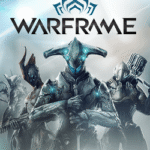
League of Legends
All trademarks belong to their respective owners.Popular Now
 BeamNG.drive
BeamNG.drive
 Stumble Guys
Stumble Guys
 Schedule I
Schedule I
 Fall Guys
Fall Guys
 CarX Street
CarX Street
 Among Us
Among Us
 Minecraft
Minecraft
 Warframe
Warframe
 R.E.P.O
R.E.P.O
 Geometry Dash
Geometry Dash
The Champion Roster: League of Legends’ Ever-Expanding Pantheon of Playstyles
At the very core of League of Legends’ enduring appeal and competitive depth lies its monumental champion roster. With over 160 unique characters, each meticulously designed with distinct abilities, lore, and aesthetic identities, League of Legends offers an unparalleled pantheon of playstyles that caters to virtually every tactical preference imaginable. This ever-expanding cast isn’t just about quantity; it’s about the intricate balance, the continuous re-imagination, and the dynamic meta shifts that ensure no two champions ever truly feel alike, guaranteeing fresh gameplay experiences and an endless frontier for mastery, making the game a vibrant tapestry of digital heroes and villains.
Diversity in Design: Beyond the Archetypes
Riot Games excels at creating champions that transcend simple classifications, offering deep and nuanced kits.
- The Classic Archetypes (with a Twist): While fundamental roles exist (tanks, mages, marksmen, assassins, supports, fighters), League’s champions rarely fit neatly into a single box.
- Tanks: Not just damage sponges, some tanks like Braum focus on defensive utility for allies, while others like Ornn also provide significant crowd control and initiation.
- Mages: From the long-range artillery of Xerath to the burst damage of Syndra or the strategic zone control of Orianna, mages offer vastly different magical experiences.
- Marksmen (AD Carries): While all aim to deal sustained physical damage, their kits vary wildly. Jinx thrives on snowballing team fights, Vayne specializes in single-target dueling, and Ashe provides global utility and initiation.
- Assassins: Whether it’s the stealth of Shaco, the mobility of Zed, or the burst-healing of Katarina, assassins offer diverse ways to eliminate high-priority targets.
- Supports: Beyond healing and shielding, supports like Thresh offer potent crowd control and playmaking, while enchanters like Lulu empower their allies.
- Unique Mechanics and Resource Systems: Many champions introduce entirely unique mechanics or resource systems that fundamentally alter how they are played. Champions like Riven rely on animation canceling and precise timing, Yasuo utilizes a flow-based resource for his ultimate, and Gnar manages a rage meter that transforms him between forms. These individual quirks deepen the learning curve and reward mastery.
- Asymmetrical Design: Riot often designs champions to have explicit strengths and weaknesses, fostering counter-play and strategic diversity. A champion excellent at single-target dueling might be vulnerable to crowd control, or a champion with global presence might be weak in early laning.
The Lore and Aesthetic Identity: More Than Just Abilities
Beyond their kits, League’s champions are brought to life by rich lore and compelling visual designs.
- Fleshed-Out Backstories: Each champion is integrated into the expansive world of Runeterra, with detailed backstories that explore their origins, motivations, relationships, and place within the intricate political and magical landscape. From the vengeful spirit of Thresh to the scientific brilliance of Heimerdinger or the familial conflict of Darius and Draven, their narratives add depth and personality.
- Distinct Visual Themes: The art team at Riot excels at crafting visually distinct champions that immediately convey their thematic identity. Whether it’s the futuristic aesthetic of the PROJECT skins, the ancient arcane power of Ryze, or the whimsical charm of Yuumi, their visual appeal is a significant draw.
- Voice Acting and Personality: High-quality voice acting, unique voice lines, and distinct personalities further imbue champions with life. The witty banter of Jinx, the stoic resolve of Garen, or the terrifying pronouncements of Mordekaiser all contribute to a memorable and engaging character experience.
Champion Release and Reworks: The Ever-Evolving Meta
The champion roster is not static; it’s a dynamic ecosystem constantly shaped by new releases and comprehensive reworks.
- New Champion Releases: Riot consistently introduces new champions, each designed to bring a novel playstyle or fill a thematic void. These releases are major events for the community, often shifting the meta and opening up new strategic possibilities.
- Champion Reworks (VGUs/CGUs): Older champions sometimes receive “Visual & Gameplay Updates” (VGUs) or “Comprehensive Gameplay Updates” (CGUs). These reworks can drastically alter a champion’s kit, visuals, and lore, bringing them up to modern design standards and reintroducing them into the meta in exciting ways. This commitment to refreshing existing content ensures that even long-time players find new ways to engage with familiar faces.
- The Meta Game: The constant interplay between champion releases, reworks, item changes, and balance patches creates a dynamic “meta game.” Certain champions rise and fall in popularity and strength, requiring players to constantly adapt their champion pools and strategies to remain competitive. This fluid meta is a key driver of long-term engagement.
Mastery and Depth: The Path to Pro
The sheer number and diversity of champions create an unparalleled path to mastery for players.
- Learning Curve: The learning curve for League of Legends is steep, largely due to the depth of its champion pool. Mastering even a single champion takes significant time and dedication, understanding their matchups, power spikes, and how they interact with different team compositions.
- Strategic Counter-Picking: The vast roster allows for intricate “counter-picking” strategies in draft phase, where teams select champions specifically designed to exploit the weaknesses of the enemy team’s picks, adding a layer of strategic depth even before the game begins.
- Personal Expression: Players often find champions that deeply resonate with their personal playstyle or personality, allowing for a unique form of self-expression within the game.
League of Legends’ champion roster is a living, breathing testament to its design philosophy: endless variety, intricate balance, and a commitment to continuous evolution. It’s the beating heart of the game, offering a unique blend of strategic depth, expressive play, and a rich narrative tapestry that ensures players will always find new heroes to master and new ways to conquer the Rift.
Which League of Legends champion do you find yourself drawn to the most, and what about their design or playstyle appeals to you?
Rating
PROS
- Great graphics and animations
- Highly competitive gameplay
- Easily one of the best mobile MOBA games available
- You can play with your friends
- Interesting mechanics
- Can be played for a long time without getting bored
- A lot of people play it, so you’ll always find someone to play with
- It’s free to play
- It’s a very fast-paced game, so it’s exciting and challenging.
CONS
- The game is not new, it has been out for a long time
- It’s a very competitive game, so it can be stressful
- It’s easy to get addicted and spend too much time playing
- It’s not very easy to learn, so it can be frustrating for beginners
- It’s hard to find time to play if you have a busy schedule
- It’s easy to get tilted (angry/frustrated) if you’re losing.
